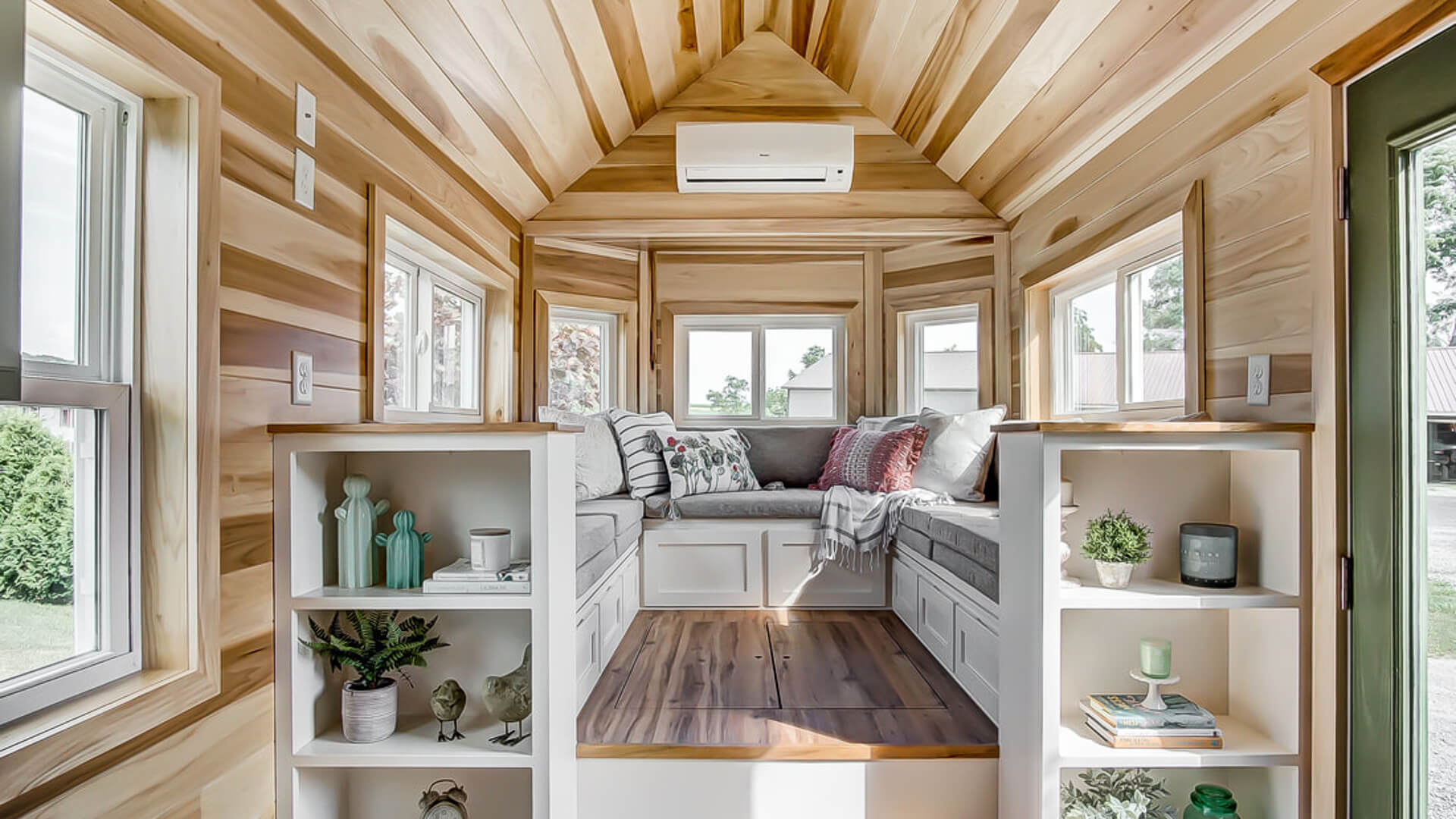Choosing the Right Materials: 2 Bedroom Tiny Houses Interior

Building a tiny house is a big commitment, and choosing the right materials is a crucial step. It’s like choosing the right ingredients for your favorite dish – the quality of your materials directly impacts the final product, its longevity, and your overall experience. You want something that’s durable, sustainable, and aesthetically pleasing, but also lightweight and easy to maintain. Think of it as a balancing act between practicality and style.
Materials Commonly Used in Tiny House Construction
The materials you choose for your tiny house will significantly influence its durability, sustainability, and visual appeal. Here’s a breakdown of some popular options, highlighting their pros and cons:
- Wood: Classic, warm, and readily available, wood is a popular choice for tiny house construction. It’s relatively inexpensive and easy to work with, making it perfect for DIY projects. However, wood can be susceptible to moisture damage and pests, requiring proper treatment and maintenance. It’s also not as fire-resistant as some other materials.
- Steel: Strong, durable, and fire-resistant, steel is a great option for tiny house framing, especially for those seeking a longer lifespan. It’s also more resistant to pests and moisture damage. However, steel can be heavy and prone to rust if not properly treated. It can also be more expensive than wood.
- Concrete: Concrete is a highly durable and fire-resistant material often used for foundations and floors in tiny houses. It’s also relatively inexpensive and readily available. However, concrete can be heavy and difficult to work with, requiring specialized skills and tools. It can also be prone to cracking if not properly reinforced.
- Bamboo: A sustainable and rapidly renewable resource, bamboo is gaining popularity in tiny house construction. It’s lightweight, strong, and aesthetically pleasing, adding a natural touch to your home. However, bamboo can be susceptible to moisture damage and requires proper treatment to prevent warping and cracking.
- Recycled Materials: Using recycled materials is a great way to reduce your environmental footprint and create a unique and sustainable tiny house. There are various recycled materials available, such as reclaimed wood, recycled plastic, and even repurposed shipping containers. However, sourcing and using recycled materials can be more challenging and may require additional expertise.
Materials for Maximizing Space in a 2-Bedroom Tiny House
When designing a 2-bedroom tiny house, maximizing space is crucial. The right materials can help you achieve this goal.
- Lightweight Materials: Choosing lightweight materials for walls, floors, and roofing is essential for keeping the overall weight of your tiny house down. This is especially important if you plan on building on a trailer or foundation that has weight restrictions. Consider using lightweight materials like bamboo, engineered wood, or recycled plastic composites.
- Insulation: Proper insulation is vital for maintaining a comfortable temperature in your tiny house year-round. Choose insulation materials that are lightweight and effective. Options include fiberglass, cellulose, spray foam, and rigid foam board. Consider the R-value of the insulation, which measures its resistance to heat flow. A higher R-value indicates better insulation.
- Multi-Functional Furniture: Using multi-functional furniture can save space and create a more efficient living environment. Look for pieces that can serve multiple purposes, such as a sofa bed, a dining table that doubles as a desk, or a storage ottoman. Consider using furniture with built-in storage compartments to maximize space.
Innovative Materials for Enhanced Functionality and Visual Appeal, 2 bedroom tiny houses interior
- Smart Materials: Smart materials are revolutionizing tiny house design, offering unique functionality and aesthetics. For example, self-healing materials can repair minor scratches and cracks, reducing maintenance needs. Photochromic materials can change color based on light exposure, allowing for dynamic and adaptable interior design.
- Sustainable Building Products: Sustainable building products are gaining popularity as people seek eco-friendly options. These materials are often made from renewable resources, have a low environmental impact, and are durable and long-lasting. Examples include bamboo flooring, cork countertops, and recycled plastic siding.
- Modular Furniture: Modular furniture is another innovative solution for maximizing space in a tiny house. These pieces can be easily reconfigured to suit different needs and layouts. They often have built-in storage compartments, maximizing functionality and minimizing clutter.
